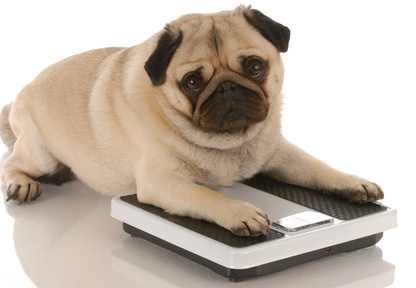
More likely than not, your pet is overweight. This is not an exaggeration: statistics from the Association for Pet Obesity Prevention (APOP)’s 2015 survey indicate that 57.9% of cats and 52.7% percent of dogs are overweight or obese.
While the extra girth (underneath the fluff!) of a cat or dog may appear to be an endearing physical quality, it’s actually a major health concern. Research has shown that excess weight reduces pets’ life expectancy and increases their risk for a host of related health issues. In numerous studies, pet obesity has been linked to type-2 diabetes, osteoarthritis, high blood pressure, and certain cancers. Overweight pets also face certain physical challenges and increased discomfort in a variety of activities, reducing their quality of life.
Many pet owners do realize that extra pounds translate to a health risk in pets, but they may not necessarily recognize pet obesity when they see it. While there’s no professional consensus on the clinical definition of “obese” vs. “overweight”, the APOP defines obesity as 30% above ideal weight. Which then begs what is exactly is the “ideal weight” for your pet? Nestle Purina Pet Care developed the Purina Body Condition Scoring system that is widely used for assessing the health of pets’ weight.
>> Find your dog’s Body Condition Score
>> Find your cat’s Body Condition Score
Here are some indicators that your pet is overweight or obese:
- You can’t easily feel your pet’s ribs
- When viewing your pet’s silhouette from the side or above, there is no visible tuck in the waist
- Your pet has fat deposits over the lumbar region of his/her back and/or at the base of the tail
When we’re talking about dogs and cats that are a fraction of our human size, a pound takes on a lot more meaning. For example, the ideal weight for a Yorkshire Terrier is between 6-8 lbs. In human equivalents, an 8 lb. Yorkie can be compared to a 5’4” woman who is 145 lbs. or a 5’9” man of 169 lbs. On the other hand, a 12 lb. Yorkie is the same as a 5’4” woman of 218 lbs. or a 237 lb. 5’9” man. In other words, when your pet puts on a couple of pounds, the impact is far more significant than the favorite jeans being a bit too tight!
If you’re concerned about your pet’s weight, it’s best to consult with a professional. Your vet at Central Animal Hospital can confirm the status of your pet’s current weight and advise on the best course of actions for achieving ideal weight, if necessary. A controlled, prescription diet may be necessary to get your pet to a healthy weight, but there are a variety of additional strategies with which you can help your pet lose weight. The APOP offers tools (including the pet-to-human-weight equivalent charts), tips, and weight-loss resources on their website.
The impact your pet’s weight has on his or her health and longevity is profound. Accordingly, what and how much you feed your pet may be the most important health decision you make in his/her daily life.
